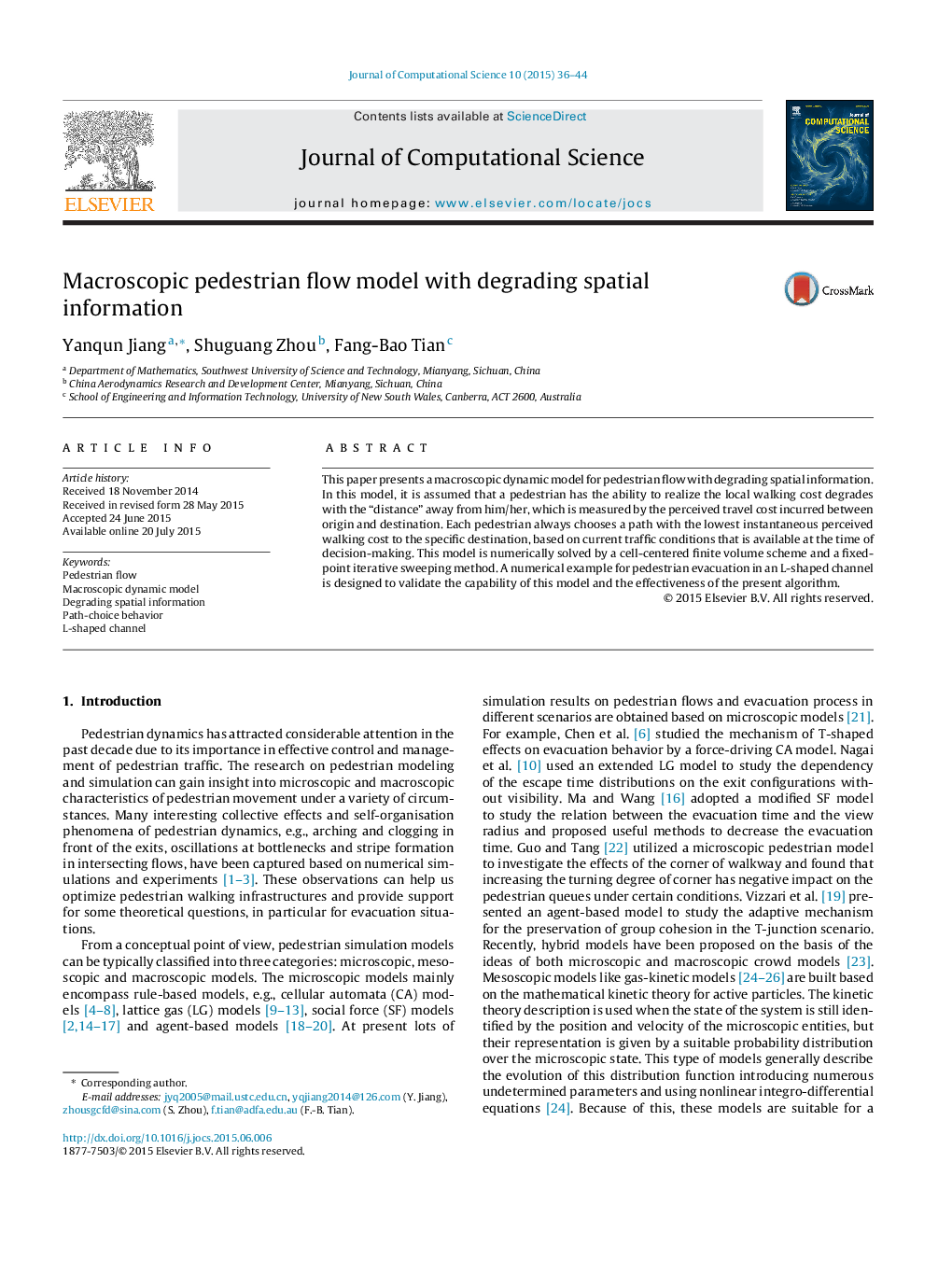| Article ID | Journal | Published Year | Pages | File Type |
|---|---|---|---|---|
| 430331 | Journal of Computational Science | 2015 | 9 Pages |
•A new macroscopic pedestrian flow model with degrading spatial information is presented.•The model guarantees that pedestrians always choose their paths in a user-optimal manner.•A numerical algorithm is designed to solve the new model.•The path-choice behavior of pedestrians can reduce the possible accidents around the corner due to the lower pedestrian density.•The perceived behavior of pedestrians can reduce the evacuation time with a proper perceived local walking speed.
This paper presents a macroscopic dynamic model for pedestrian flow with degrading spatial information. In this model, it is assumed that a pedestrian has the ability to realize the local walking cost degrades with the “distance” away from him/her, which is measured by the perceived travel cost incurred between origin and destination. Each pedestrian always chooses a path with the lowest instantaneous perceived walking cost to the specific destination, based on current traffic conditions that is available at the time of decision-making. This model is numerically solved by a cell-centered finite volume scheme and a fixed-point iterative sweeping method. A numerical example for pedestrian evacuation in an L-shaped channel is designed to validate the capability of this model and the effectiveness of the present algorithm.
